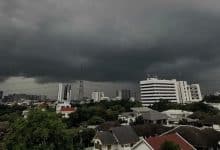Northern Thailand prepares for severe summer storms

Thailand is currently bracing for a series of summer storms that are expected to unleash heavy rains, hail, and strong winds across the northern regions of the country. The Meteorological Department of Thailand (TMD) issued a warning, highlighting the imminent weather disturbances brought on by a high-pressure area extending from China that will impact the country until Thursday, April 11.
Residents in the northern parts of Thailand are experiencing sweltering heat, which, when combined with a western disturbance moving through Myanmar and northern Thailand from April 9 to April 11, is likely to result in turbulent weather conditions. The summer storms are anticipated to bring thunderstorms, gusty winds, and possible hail in some areas, as well as the risk of lightning strikes.
The TMD urged citizens to take precautions against the summer storms, advising against staying in open areas, under large trees, near weak structures, and close to billboards that may not withstand the strong winds. Farmers are also advised to protect their crops and livestock from potential damage.
The regions predicted to be affected by the severe weather today, April 9, include several provinces in the northern, northeastern, central, and eastern parts of Thailand, as well as Bangkok and its vicinity. Tomorrow, additional areas in these regions are expected to face the impact of the summer storms. By Thursday, the forecast indicates that the Mae Hong Son, Chiang Mai, Chiang Rai, Lampoon, Lampang, Phayao, Nan, Phrae, and Tak provinces will also experience the effects of the storm.
The public is encouraged to stay updated with the latest announcements from the TMD and to seek information from their website or call their 24-hour hotline. The department will continue to monitor the situation and is scheduled to issue further updates as the weather develops, reported KhaoSod.
As these summer storms are a recurring seasonal phenomenon in Thailand, the emphasis remains on preparedness and awareness to mitigate the risks associated with such severe weather events. The safety and readiness of the population, particularly in the most vulnerable regions, are of utmost importance to minimize the adverse impacts of the storms.
Latest Thailand News
Follow The Thaiger on Google News:


























